Discover 20 hidden attractions, cool sights, and unusual things to do in Bhubaneswar (India). Don't miss out on these must-see attractions: Udayagiri, Lingaraja Temple, and Nandankanan Zoological Park. Also, be sure to include Sisupalgarh in your itinerary.
Below, you can find the list of the most amazing places you should visit in Bhubaneswar (Odisha).
Table of Contents
Udayagiri
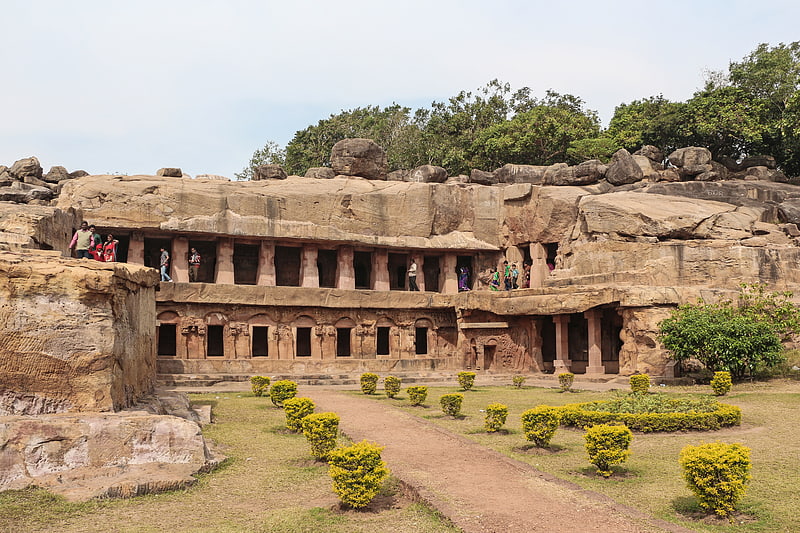
Also known as: उदयगिरि और खंडगिरि
Tourist attraction in Bhubaneswar, India. Udayagiri and Khandagiri Caves, formerly called Kattaka Caves or Cuttack caves, are partly natural and partly artificial caves of archaeological, historical and religious importance near the city of Bhubaneswar in Odisha, India. The caves are situated on two adjacent hills, Udayagiri and Khandagiri mentioned as Kumari Parvata in the Hathigumpha inscription. They have a number of finely and ornately carved caves built during the 1st century BCE. It is believed that most of these caves were carved out as residential blocks for Jaina monks during the reign of King Kharavela. Udayagiri means "Sunrise Hill" and has 18 caves while Khandagiri has 15 caves.
The caves of Udayagiri and Khandagiri, called lena or leṇa in the inscriptions, were dug out mostly during the reign of Kharavela for the abode of Jaina ascetics. The most important of this group is Ranigumpha in Udayagiri which is a double storeyed monastery. Other important caves include Hathi Gumpha, Ananta Gumpha, Ganesha Gumpha, Jaya Vijaya Gumpha, Mancapuri Gumpha, Bagha/Byaghra/Vyaghra Gumpha and Sarpa Gumpha.
Archaeological Survey of India has listed Udayagiri and Khandagiri Caves in the list of "Must See" Indian Heritage.[1]
Address: Digambara Jaina Temple khandgiri, Bhubaneswar
Lingaraja Temple
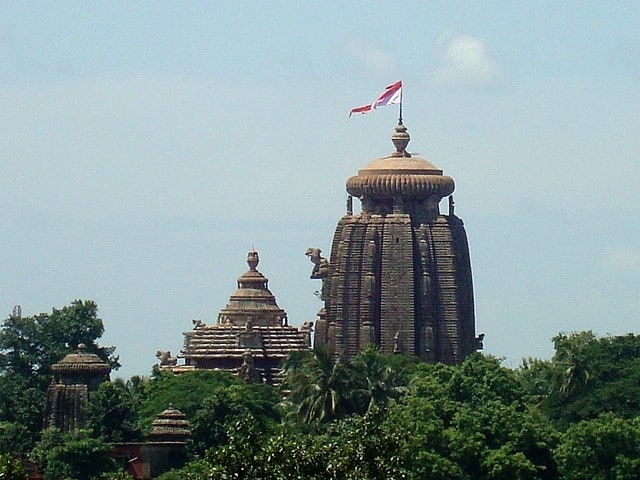
Also known as: लिंगराज मंदिर
Sprawling, ancient Hindu temple compound. Lingaraja Temple is a Hindu temple dedicated to Shiva and is one of the oldest temples in Bhubaneswar, the capital of the Indian state of Odisha,India. The temple is the most prominent landmark of Bhubaneswar city and one of the major tourist attractions of the state.
The Lingaraja temple is the largest temple in Bhubaneswar. The central tower of the temple is 180 ft (55 m) tall. The temple represents the quintessence of the Kalinga architecture and culminating the medieval stages of the architectural tradition at Bhubaneswar. The temple is believed to be built by the kings from the Somavamsi dynasty, with later additions from the Ganga rulers. The temple is built in the Deula style that has four components namely, vimana (structure containing the sanctum), jagamohana (assembly hall), natamandira (festival hall) and bhoga-mandapa (hall of offerings), each increasing in the height to its predecessor. The temple complex has 50 other shrines and is enclosed by a large compound wall.
Bhubaneswar is called the Ekamra Kshetra as the deity of Lingaraja was originally under a mango tree (Ekamra) as noted in Ekamra Purana, a 13th-century Sanskrit treatise. The temple is active in worship practises, unlike most other temples in Bhubaneswar. The temple has images of Vishnu, possibly because of the rising prominence of Jagannath sect emanating from the Ganga rulers who built the Jagannath Temple in Puri in the 12th century. The central deity of the temple, Lingaraja, is worshipped both as Shiva and Vishnu. The harmony between the two sects of Hinduism, Shaivism, and Vaishnavism, is seen in this temple where the deity is worshipped as Harihara, a combined form of Vishnu and Shiva.
Lingaraja temple is maintained by the Temple Trust Board and the Archaeological Survey of India (ASI). The temple has an average of 6,000 visitors per day and receives lakhs of visitors during festivals. Shivaratri festival is the major festival celebrated in the temple and event during 2012 witnessed 200,000 visitors. The temple compound is not open to non-Hindus, but there is a viewing platform beside the wall offering a good view of the main exteriors. This was originally erected for a visit by Lord Curzon when Viceroy.[2]
Address: Rath Rd, 751002 Bhubaneswar
Nandankanan Zoological Park
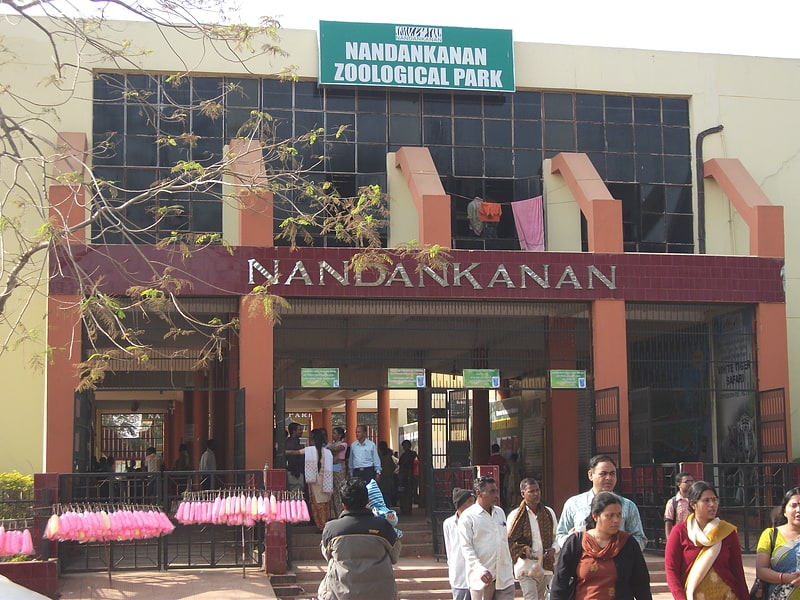
Popular zoo with a white tiger safari. Nandankanan Zoological Park is a 437-hectare zoo and botanical garden in Bhubaneswar, Odisha, India. Established in 1960, it was opened to the public in 1979 and became the first zoo in India to join World Association of Zoos and Aquariums in 2009. It also contains a botanical garden and part of it has been declared a sanctuary. Nandankanan, literally meaning The Garden of Heaven, is located near the capital city, Bhubaneswar, in the environs of the Chandaka forest, and includes the 134-acre Kanjia lake.
A major upgrade was done in 2000 (after the damage caused by the super-cyclone of 1999 in coastal Odisha). More than 2.6 million visitors visit Nandankanan every year.[3]
Sisupalgarh
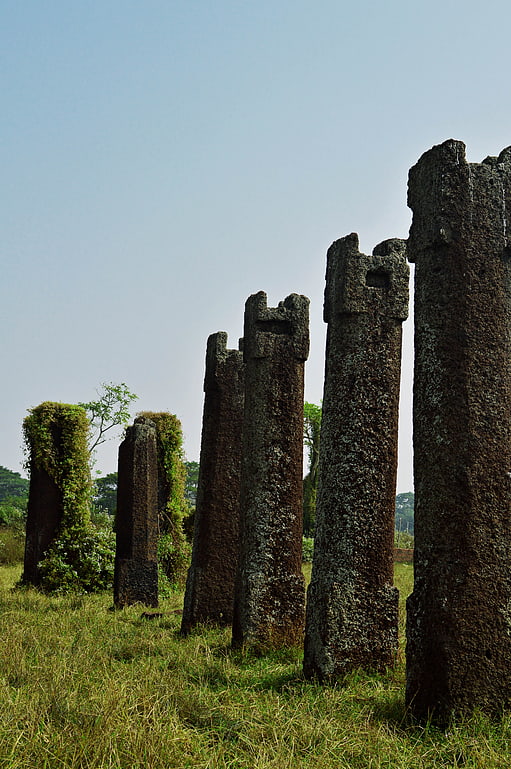
Sisupalgarh or Sisupalagada is situated in Khurda District in Odisha, India and houses ruined fortifications. It used to be the capital of ancient Kalinga. It is identified with Kalinganagara of Kharavela and Tosali of Ashoka. It is one of the largest and best preserved early historic fortifications in India, with the earliest occupation both inside and outside the later site´s northern rampart around 7th to 6th centuries BCE.[4]
Ananta Vasudeva Temple
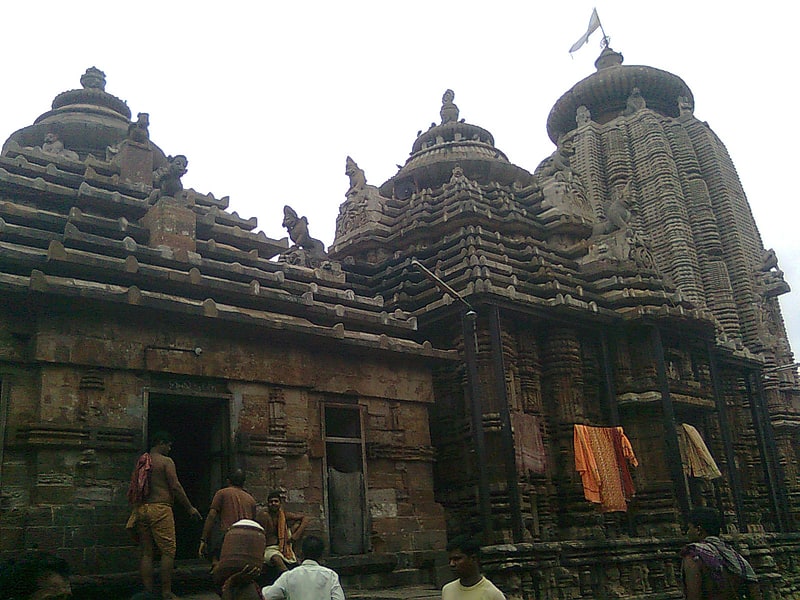
Popular Hindu temple built in 1200s. Ananta Vasudeva Temple is a Hindu temple dedicated to Krishna, an avatar of Vishnu located in Bhubaneswar, the state capital of Odisha, India. The temple was constructed in the thirteenth century, and the complete murtis of Krishna, Balarama and Subhadra are worshipped there. The temple dates back to the period of Chandrika Devi, the daughter of Anangabhima III, during the reign of the king Bhanudeva. A commemorative inscription that marked the foundation of the temple can be found in the British Museum's collection.[5]
Odisha Crafts Museum

Museum in Bhubaneswar, India. Odisha Crafts Museum also known as Kalabhoomi is a museum in Bhubaneswar, Odisha, India, dedicated to the art and crafts of Odisha. It was inaugurated by the Chief Minister of Odisha, Naveen Patnaik, on 22 March 2018. The museum is spread across 12.68 Acres of an area, divided into eight galleries, Open air amphitheater, workshop area and souvenir shop.
The museum celebrates the craftsmanship of Odia artisans by putting on display their breath-taking masterpieces. Divided into 2 blocks, the museum has a display area and a live section. The display area focuses on galleries about Handicrafts and Handlooms from around the state while the live section is equipped with an open air theatre as well as separate workshop zones. Kala Bhoomi is built using local raw materials such as the laterite stone which can still be seen in some of the oldest monuments around the state. At Kala Bhoomi we have 10 galleries out of which 8 are open to the public. The Handicrafts galleries are on Terracotta, Traditional Paintings, Stone and Wood carving, Natural material crafts and Tribal Crafts. The Handlooms galleries display unique and antique raw materials and equipment as well as variety of Handlooms from across the state. Several handloom and handicraft items are very rare and over a 100-year-old[6]
Megheswar Temple
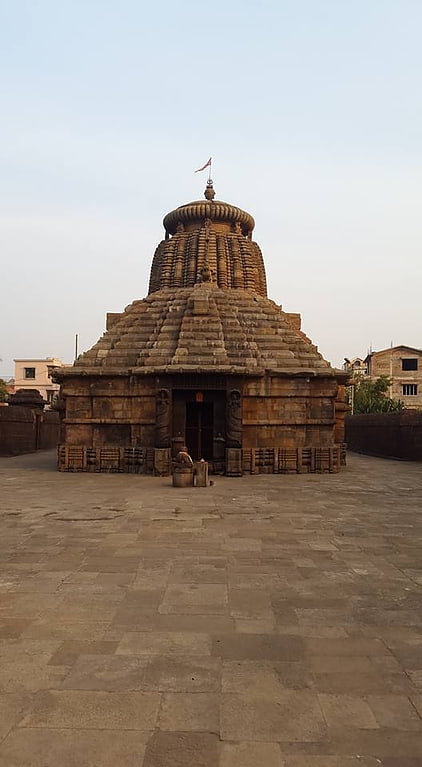
The Megheswar Temple is a 12th-century Hindu temple dedicated to the deity Shiva. The temple is located at Tankapani road area in Bhubaneswar, India.[7]
Odisha State Museum
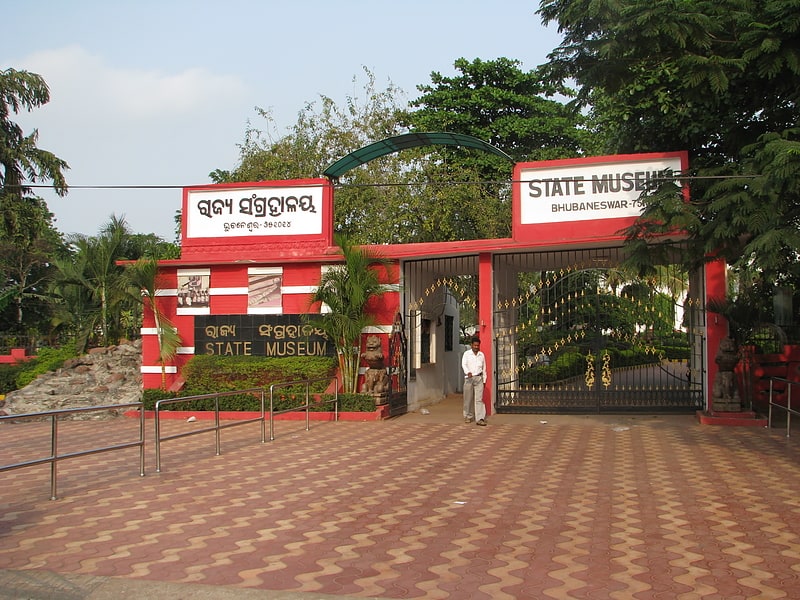
Museum in Bhubaneswar, India. Odisha State Museum is a museum in Bhubaneswar, Odisha. In its original form it was established in 1932 and later moved to the current building in 1960. The museum is divided into eleven sections, viz, Archaeology, Epigraphy, Numismatics, Armoury, Mining & Geology, Natural History, Art & Craft, Contemporary Art, Patta Painting, Anthropology and Palmleaf Manuscripts. The museum is headed by a superintendent and the administrative control lies in the hands of Cultural Affairs Department, Government of Odisha.[8]
Address: Near, Lewis Rd, 751014 Bhubaneswar
Kedareswar Temple
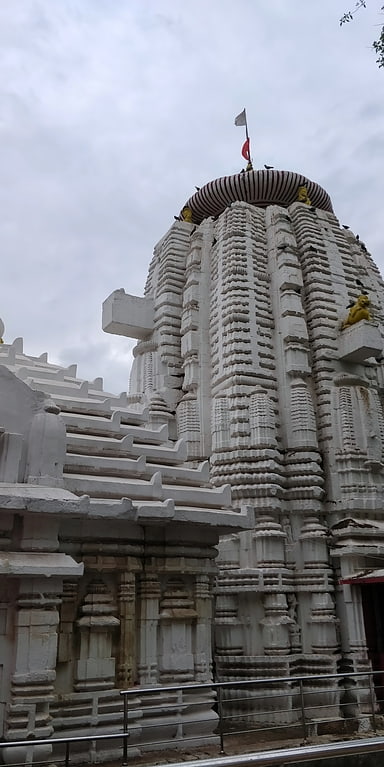
Hindu temple in Berhampur, India. Kedareswar Temple, one of the eight Astasambhu Temples, is near the Mukteswar Temple, in Bhubaneswar, Odisha. The presiding deity is Shiva, referred to locally by the name ‘Kedareshwar’. It is in the precinct of Kedara-Gouri on the right side of the road leading to Puri from Bhubaneswar and at a distance of 40 metres south of Muktesvara. It is one of the ten monuments within the precinct. It is the main temple of the complex. The temple is facing south and the enshrined deity is a circular yonipitha made of sandstone. The linga at the centre is missing. The sanctum is 2.5 square meters which is 0.8 meters below the present ground. It stands near the yard of the Mukteswar Temple.[9]
Papanasini Siva Temple
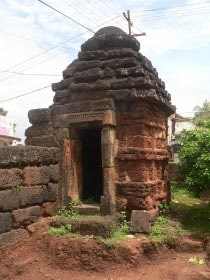
Papanasini Siva Temple is an abandoned Hindu temple located in Bhubaneswar, Orissa, India.[10]
Ekamra Kshetra
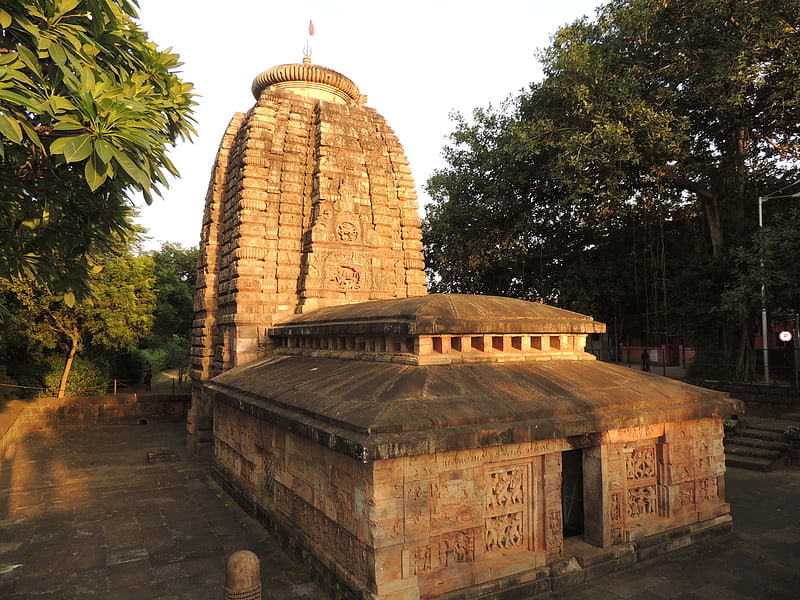
Ekamra Kshetra or the temple city of Bhubaneswar is a series of ancient sandstone temples, heritage ponds and water tanks, its wealth of monuments is testament to an ancient continuous architectural and historical heritage covering over 2,000 years from the 3rd century BC to the 15th century AD. It has been listed as a tentative site in UNESCO World Heritage list.[11]
Kapilesvara Siva Temple
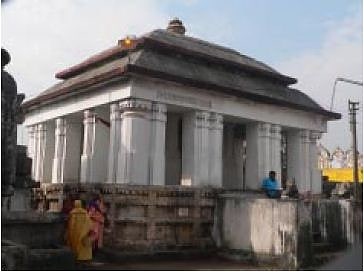
The Kapilesvara temple is a Hindu temple dedicated to Shiva located in the south western outskirt of the village Kapilesvara, Old Town, Bhubaneswar, Odisha, India. It is located at the end of Kapilesvara road leading from Lingaraj temple to Kapilesvara Village. The presiding deity is a Siva-lingam at the center of a circular yonipitha inside the sanctum. It is a living temple, facing towards east and maintained by Kapilesvara Temple Trust Board. The temple is situated within the precinct along with 33 other monuments. The precinct is located on the northern embankment of Manikarnika tank over an area of 44.00 square metres.[12]
Pathani Samanta Planetarium
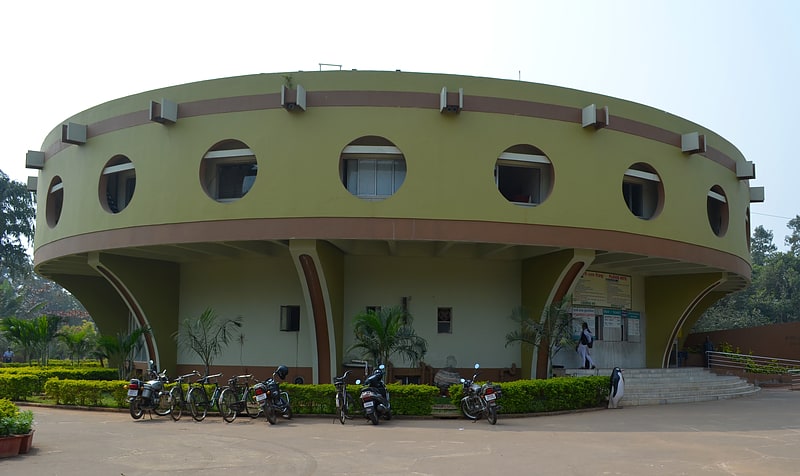
Planetarium in Bhubaneswar, India. Pathani Samanta Planetarium is a planetarium in the city of Bhubaneswar in India named after astronomer Pathani Samanta. It was founded for creating awareness about astronomy. It carries on activities like night sky viewing, audio visual programs and poster shows. It also displays various astronomical devices.
The planetarium was established by Science and Technology Department, Government of Odisha.[13]
Parashurameshvara Temple
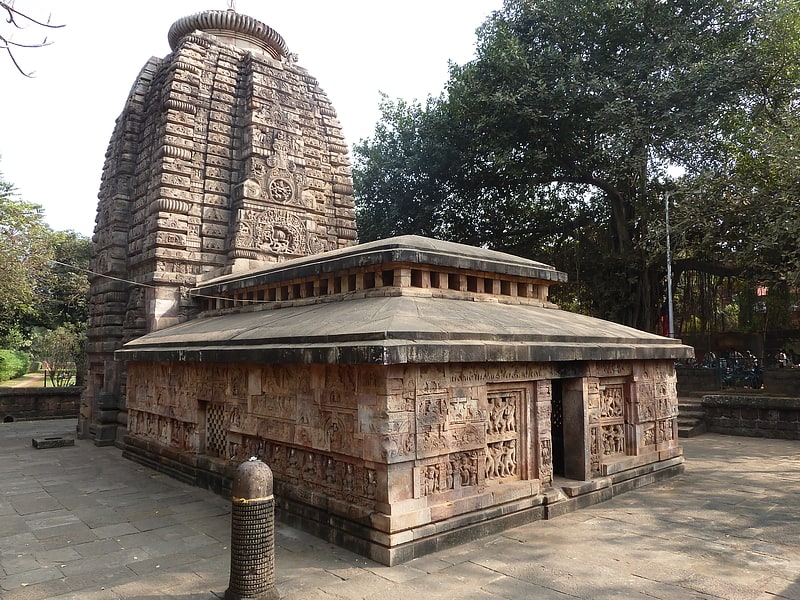
Hindu temple in Bhubaneswar, India. Parsurameswara Temple also spelt Parashurameshvara, located in the East Indian city of Bhubaneswar, the capital of Odisha,India, is considered the best preserved specimen of an early Odia Hindu temple dated to the Shailodbhava period between the 7th and 8th centuries CE. The temple is dedicated to the Hindu god Shiva and is one of the oldest existing temples in the state. It is believed to have been built around 650 CE in Nagara style and has all the main features of the pre-10th century Kalinga Architecture style temples. The temple is one among the Parashurameshvara group of temples.
Parashurameshvara Temple has a vimana, the sanctum, and a bada, the curvilinear spire over its roof, rising to a height of 40.25 ft (12.27 m). It is the first temple to have an additional structure called jagamohana, compared to the earlier temples that had only the vimana. Though the temple is dedicated to Shiva, it contains sculpted images of Shakta deities, which are otherwise normally part of Shakta temples. The temple is the first in Bhubaneswar to contain depictions of Saptamatrikas, namely, Chamunda, Varahi, Indrani, Vaishnavi, Kaumari, Shivani and Brahmi. The temple is maintained and administered by the Archaeological Survey of India (ASI) as a ticketed monument. Parashurashtami is the major festival celebrated in the temple during June–July every year. The temple is one of the most prominent tourist attractions in the state of Odisha.[14]
Tribal Research Institute Museum

Museum in Pune, India. Tribal Research Institute Museum, Museum of Tribal Arts and Artifacts, is a museum in Bhubaneswar, Odisha inside the campus of Scheduled Castes & Scheduled Tribes Research & Training Institute. It is popularly known as Tribal Museum and conceptually labeled as Museum of Man. It has life-sized authentic tribal dwellings, created by the tribal craftsmen offers a view of the State's tribal heritage. It has sections which showcase tribal artifacts and objects, focusing on well researched, documented cultural life of tribals of Odisha. It is headed by a Director, who is in the rank of a University Professor, and the administrative control lies in the hands of ST, SC, Minorities, and Backward Classes Welfare Department, Government of Odisha.
This Museum is an integrated part of the Scheduled Castles and Scheduled Tribes Research and Training Institute (SCSTRTI), which disseminates knowledge covering the human species in totality.[15]
Mukteshvara Temple

Also known as: मुक्तेश्वर मन्दिर
Hindu temple in Bhubaneswar, India. Mukteshwara Temple is a 10th-century Hindu temple dedicated to Shiva located in Bhubaneswar, Odisha, India. The temple dates back to 950–975 CE and is a monument of importance in the study of the development of Hindu temples in Odisha. The stylistic development the Mukteswara marks the culmination of all earlier developments, and initiates a period of experiment which continues for an entire century, as seen in such temples as the Rajarani Temple and Lingaraj temple, both located in Bhubaneswar. It is one of the prominent tourist attractions of the city.[16]
Museum of Tribal Arts and Artifacts

Museum in Pune, India. Tribal Research Institute Museum, Museum of Tribal Arts and Artifacts, is a museum in Bhubaneswar, Odisha inside the campus of Scheduled Castes & Scheduled Tribes Research & Training Institute. It is popularly known as Tribal Museum and conceptually labeled as Museum of Man. It has life-sized authentic tribal dwellings, created by the tribal craftsmen offers a view of the State's tribal heritage. It has sections which showcase tribal artifacts and objects, focusing on well researched, documented cultural life of tribals of Odisha. It is headed by a Director, who is in the rank of a University Professor, and the administrative control lies in the hands of ST, SC, Minorities, and Backward Classes Welfare Department, Government of Odisha.
This Museum is an integrated part of the Scheduled Castles and Scheduled Tribes Research and Training Institute (SCSTRTI), which disseminates knowledge covering the human species in totality.[17]
Rameshwar Deula
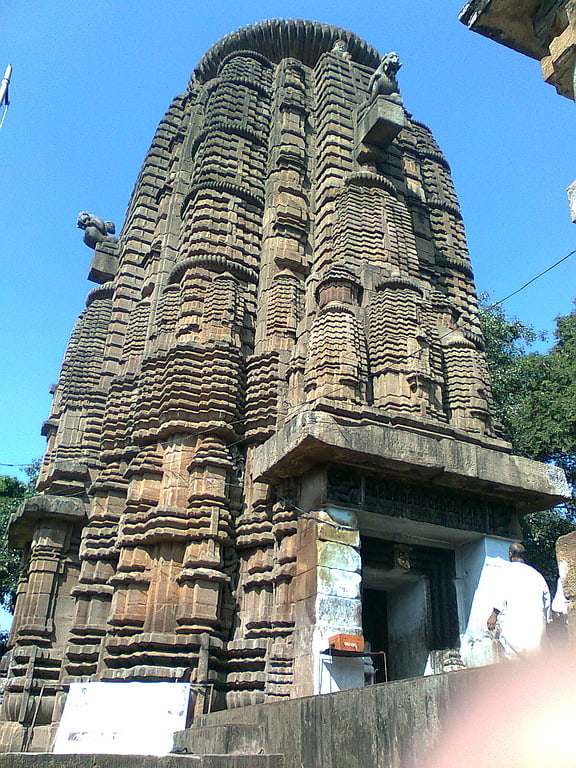
The Rameshwar temple is very old temple in Bhubaneswar, Odisha, India, and known as the Mausi Maa temple of Lingaraj Temple. It is located from 2 km distance from Lingaraj shrine.[18]
Brahmeswara Temple

Hindu temple. Brahmeswara Temple is a Hindu temple dedicated to Shiva located in Bhubaneswar, Odisha, India,erected at the end of the 9th century CE, is richly carved inside and out. This Hindu temple can be dated with fair accuracy by the use of inscriptions that were originally on the temple. They are now lost, but records of them preserve the information of around 1058 CE. The temple is built in the 18th regnal year of the Somavamsi king Udyotakesari by his mother Kolavati Devi, which corresponds to 1058 CE.[19]
Regional Museum of Natural History
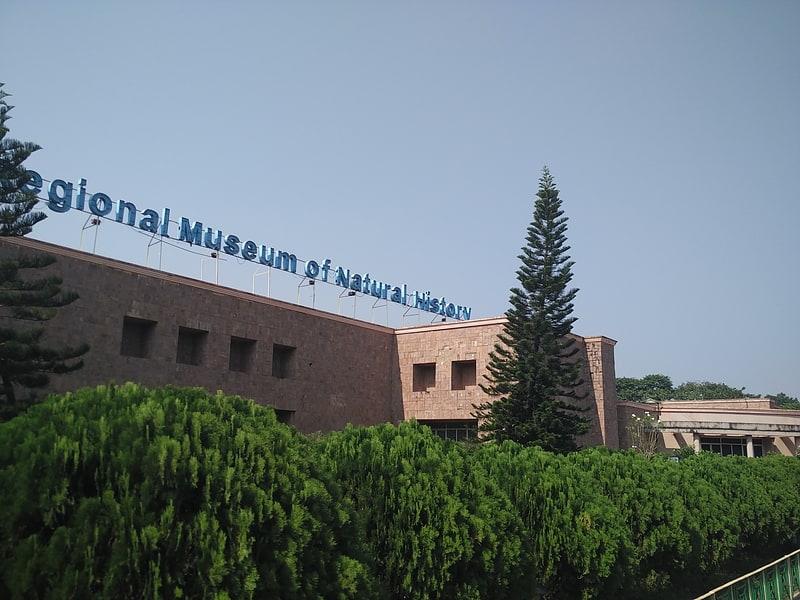
Museum in Bhubaneswar, India. The Regional Museum of Natural History, Bhubaneswar is a museum in Bhubaneswar, Odisha, India with exhibits on plants, animals and geology of the eastern region of India. The Regional Museum of Natural History at Bhubaneswar, was inaugurated in 2004. It was undertaken by the Ministry of Environment and Forests, Government of India. The museum is located near Acharaya Vihar Square on Sachivalaya Marg, Bhubaneswar. The museum exhibits plants, animals and geology of the Odisha, the Eastern and north-eastern India and the Andaman and Nicobar Islands of India. The galleries emphasize the conservation of nature and natural resources while depicting ecological interrelationship among plants and animals. Visually challenged students can feel the exhibits of animals on the premises. The museum provides an extracurricular activity for schools and promotes environmental awareness. A skeleton of baleen whale has been installed in the museum, which is supposed to be largest for any museum in India. Since May, 2017 this museum became one of the first museums in india to generate and use green energy though solar power production. This grid connected solar power plant is of roof type and generate 189 KvA electricity per month which makes it largest rooftop solar power plant in Odisha.[20]
Address: Sachivalaya Marg, 751013 Bhubaneswar